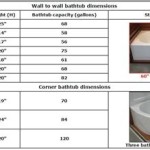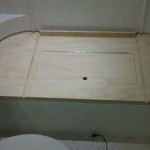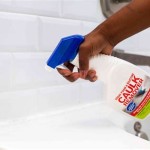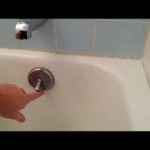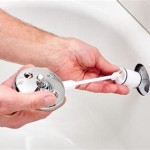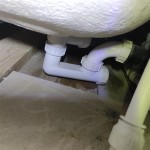How Much Does It Cost To Refinish A Porcelain Bathtub?
Refinishing a porcelain bathtub is a cost-effective alternative to replacement, offering a way to revitalize a worn or damaged fixture without the significant expense and disruption of a full bathroom remodel. The cost to refinish a porcelain bathtub can vary widely, influenced by several factors including the location, condition of the tub, and chosen refinishing method. Understanding these cost drivers can help homeowners budget accurately and make informed decisions about their bathroom renovation projects.
Generally, refinishing a bathtub involves repairing any chips or cracks, thoroughly cleaning and etching the surface, and then applying several coats of a durable coating material. This process effectively creates a new surface over the existing porcelain, restoring its shine and extending its lifespan.
The range in cost can be attributed to the type of refinishing process selected. DIY kits offer the most affordable option upfront, but require considerable skill and preparation to achieve professional-looking results. Hiring a professional refinisher, while significantly more expensive, typically guarantees a higher-quality finish and longer-lasting results.
This article will explore the various factors that contribute to the cost of refinishing a porcelain bathtub, providing a comprehensive overview of the expenses involved and helping homeowners determine the most suitable option for their needs and budget.
Factors Influencing the Cost of Bathtub Refinishing
Several key factors directly impact the cost of refinishing a porcelain bathtub. Understanding these elements is crucial for obtaining accurate cost estimates and making informed decisions. These factors include the extent of damage, the type of refinishing process used, the location of the property, and the professional's experience.
One of the most significant cost drivers is the condition of the existing bathtub. Minor chips, scratches, or stains are relatively simple to address and add little to the overall cost. However, more extensive damage such as deep gouges, rust, or previous refinishing failures will substantially increase the labor and materials required. Repairing significant damage requires specialized techniques and materials, often involving patching compounds and extensive surface preparation.
The type of refinishing method chosen also plays a vital role. The two primary options are do-it-yourself (DIY) kits and professional refinishing services. DIY kits are the least expensive upfront, ranging from $50 to $200, depending on the quality and type of coating. However, they require considerable preparation, skill, and time. The results can be unpredictable, and the longevity of the finish is often shorter compared to professional applications. Professional refinishing, on the other hand, typically costs between $400 and $1,000 or more, depending on the complexity of the job. Professionals use specialized equipment, high-quality materials, and possess the experience to achieve a durable, long-lasting finish.
Geographic location is another important factor. The cost of labor and materials can vary significantly depending on the region. Metropolitan areas with higher living costs tend to have higher prices for refinishing services. Additionally, local regulations and environmental requirements may influence the types of materials that can be used and the disposal methods required, further affecting the overall cost.
The experience and reputation of the refinishing professional also affect pricing. Experienced professionals with a proven track record are likely to charge more for their services. However, this often translates to a higher-quality finish and reduced risk of future problems. It is advisable to obtain multiple quotes from different professionals, carefully review their credentials and customer reviews, and ensure that they provide a warranty for their work.
Accessibility to the bathroom can also influence the cost. Bathrooms located on upper floors or in hard-to-reach areas may require additional labor and time, potentially increasing the overall cost. Similarly, if the bathroom requires extensive protection or ventilation due to its size or layout, this can add to the expense.
Furthermore, the type of coating material used can affect the price. Common coating materials include epoxy, acrylic urethane, and polyurethane. Each material has its own characteristics in terms of durability, gloss, and chemical resistance. Higher-quality coatings, such as polyurethane, typically cost more but offer better performance and longevity.
DIY Refinishing vs. Professional Refinishing: A Cost Comparison
Deciding between DIY refinishing and hiring a professional refinisher is a critical decision that significantly impacts the overall cost and quality of the project. Each option has its advantages and disadvantages, and the best choice depends on the homeowner's skills, budget, and desired outcome.
DIY refinishing is generally the most cost-effective option, particularly in terms of upfront expenses. DIY kits typically range from $50 to $200 and include the necessary cleaning agents, etching solutions, and coating materials. However, the cost savings come with significant trade-offs. DIY refinishing requires considerable preparation, including thorough cleaning, sanding, and masking. It also demands a degree of skill and patience to apply the coating evenly and avoid imperfections such as drips, runs, or bubbles.
One of the major drawbacks of DIY refinishing is the quality and durability of the finish. DIY kits often use lower-quality materials compared to those used by professionals, resulting in a finish that is less resistant to scratches, stains, and chemicals. The lifespan of a DIY refinished bathtub is typically shorter, often requiring repeat applications within a few years.
Moreover, DIY refinishing can be hazardous if proper safety precautions are not taken. The chemicals used in refinishing kits can be toxic and require adequate ventilation and personal protective equipment such as gloves, masks, and eye protection. Improper handling of these chemicals can lead to health problems.
Professional refinishing, while more expensive upfront, offers several advantages in terms of quality, durability, and convenience. A professional refinisher will typically charge between $400 and $1,000 or more, depending on the complexity of the job and the location. However, this cost includes all labor, materials, and equipment necessary to achieve a high-quality, long-lasting finish.
Professional refinishers use specialized equipment, such as spray guns and ventilation systems, to ensure a smooth, even application of the coating. They also have the expertise to properly prepare the surface, repair any damage, and address any potential problems that may arise during the process. The use of high-quality materials ensures that the refinished bathtub is more durable and resistant to wear and tear.
Furthermore, professional refinishers typically offer a warranty for their work, providing peace of mind to homeowners. If any problems arise after the refinishing, the professional will usually repair them at no additional cost.
In summary, DIY refinishing is a viable option for homeowners on a tight budget who are willing to invest the time and effort to achieve a decent result. However, it is crucial to be realistic about the limitations of DIY kits and to take proper safety precautions. Professional refinishing, while more expensive, offers a higher-quality, more durable finish and the peace of mind that comes with a professional warranty.
Additional Costs and Considerations
Beyond the basic cost of refinishing, several additional expenses and considerations can impact the overall budget. These include the cost of repairing pre-existing damage, the type of finish desired, and any necessary plumbing work.
As mentioned earlier, the condition of the bathtub significantly influences the overall cost. If the bathtub has extensive damage such as deep gouges, rust, or previous refinishing failures, the cost of repair can be substantial. These repairs require specialized techniques and materials, often involving patching compounds and extensive surface preparation. It is essential to obtain a detailed assessment from a professional refinisher to determine the extent of the damage and the cost of repair before proceeding with the refinishing project.
The type of finish desired can also affect the price. Different finishes offer varying degrees of gloss, texture, and durability. For example, a high-gloss finish may require additional coats of coating material and more extensive polishing, increasing the overall cost. Similarly, a textured finish may require specialized techniques and materials.
Another consideration is the need for plumbing work. In some cases, it may be necessary to remove or replace certain plumbing fixtures, such as the drain or overflow, before refinishing. This can add to the overall cost, especially if the plumbing work requires a licensed plumber. It is advisable to assess the condition of the plumbing fixtures before starting the refinishing project and to factor in any necessary plumbing work into the budget.
Ventilation is a crucial aspect of the refinishing process. The chemicals used in refinishing are often strong-smelling and can be harmful if inhaled. Adequate ventilation is essential to ensure the safety of the homeowner and the refinisher. If the bathroom lacks adequate ventilation, it may be necessary to install temporary ventilation systems, which can add to the overall cost.
The downtime associated with the refinishing process should also be considered. Refinishing typically takes several days to complete, including the time required for preparation, application, and curing. During this time, the bathtub cannot be used, which may require alternative bathing arrangements. It is important to factor in the inconvenience of this downtime when planning the refinishing project.
Proper disposal of waste materials is another important consideration. Refinishing involves the use of chemicals and materials that may be hazardous. It is essential to dispose of these materials properly, following local regulations. Failure to do so can result in fines and environmental damage.
Finally, it is advisable to obtain multiple quotes from different refinishing professionals and to carefully review their credentials, customer reviews, and warranty policies. Choosing a reputable and experienced professional can help ensure a high-quality finish and minimize the risk of future problems.

2025 Bathtub Refinishing Costs Tub Reglazing Resurfacing

Bathtub Refinishing Cost How Much Reglaze Showers Tile Countertops Floors Porcelain Laminate

Bathtub Refinishing Todds Porcelain Fiberglass Repair

How Much Does It Cost To Refinish A Bathtub 2025 Data

How Much To Reglaze A Tub Century Re

Is A Porcelain Tub Refinishing Procedure Good Idea America Pros

How Much Does Bathtub Refinishing Cost 2025 Data Angi

How To Refinish A Bathtub On Budget

How Much Does It Cost To Refinish A Bathtub 2025 Data

Tub Refinishing Maryland Tile
Related Posts


